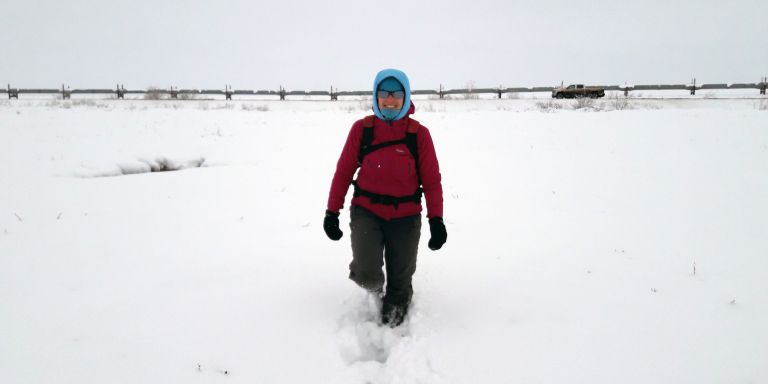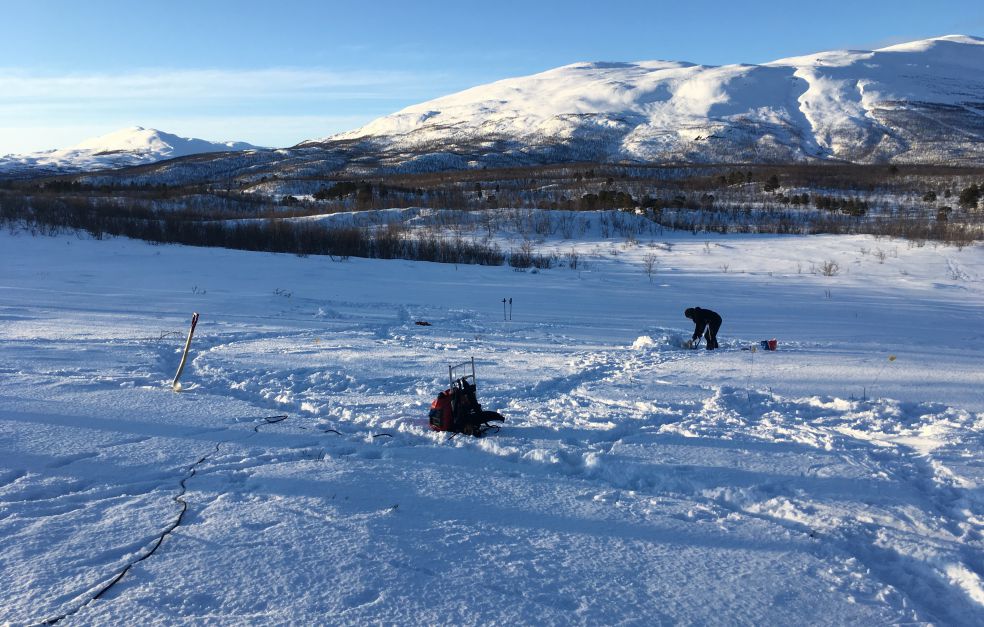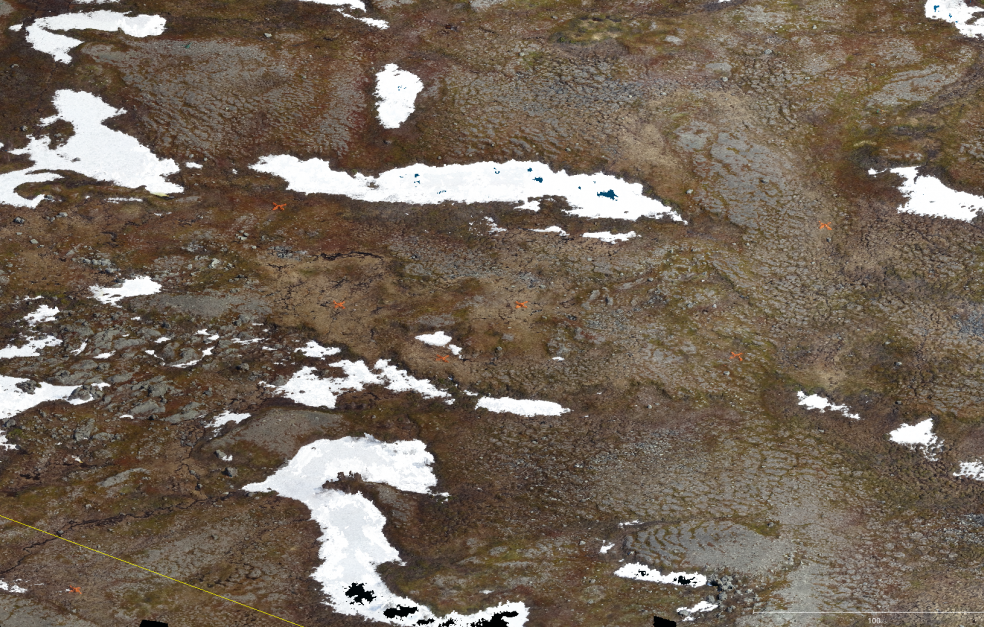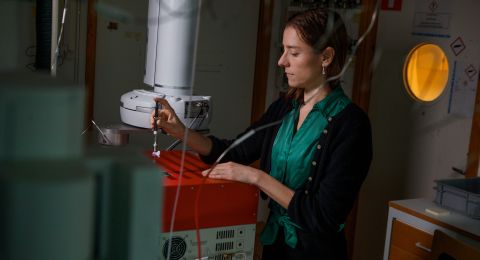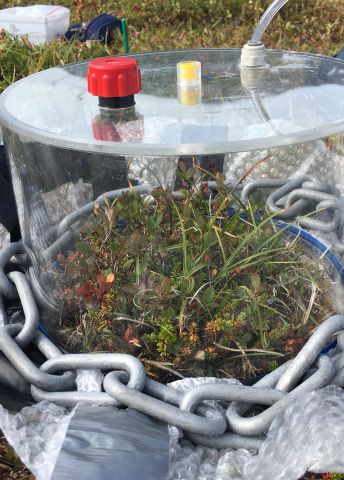
Project Grant 2020
Year-round climate feedbacks of winter phenological (mis)matches of plants and microbes across the Arctic
Principal investigator:
Ellen Dorrepaal, Associate Professor
Co-investigators:
Umeå University
Johan Olofsson
Swedish University of Agricultural Sciences
Karina Engelbrecht Clemmensen
Sara Hallin
Institution:
Umeå University
Grant in SEK:
SEK 28.9 million over five years
In the Arctic – the sea and land area around the North Pole – winters are long, dark and cold. Snow blankets the landscape for long periods.
But not everything is asleep. Under the insulating snowpack, processes are in motion – processes that can impact our climate.
Plants and microorganisms remain active; they take up nutrients and break down organic matter. These processes can lead to the formation of greenhouse gases, which are then released into the atmosphere.
But since most research in the Arctic has been conducted during the summer months, we know little about the processes taking place in winter.
“At present we don’t know how active organisms are during the winter, or what drives these processes. This means that we lack knowledge vital to predict climate trends, here in the Arctic and across the world,” says Ellen Dorrepaal.
She is heading a research project aiming to fill this gap in our knowledge, by examining the activity of plants, fungi and bacteria during the arctic winter.
The Arctic is important because climate change causes a large rise in temperature there, particularly in winter. This may have major implications in a landscape where snow and frost are common features.
“If the temperature rises above zero, snow turns to rain and water, frozen ground thaws. The freeze–thaw boundary has a huge bearing on soil processes and plant physiology.”
Demanding field work
Most of the experiments are being conducting in Abisko, 200 kilometers north of the Arctic Circle. Umeå University has a climate impacts research center at the Abisko Scientific Research Station.
Research outdoors in Abisko in winter is a challenge. The ground is frozen, the snow can be several meters deep, and the equipment may struggle to cope with the cold. The scientists need to be able to take soil samples without disturbing the snowpack, and to reach the plants under the snow in late winter without exposing them to sunlight.
“But we have already tried out several of our methods here over the past few years, so I’m convinced that we’ll succeed. Everything is made easier by the fact that we live here all year round, and that we can have researchers based here. If a snowstorm strikes, it’s easy for us to take samples a day or two later.”
Monitoring carbon and nitrogen
The scientists are studying activity in organisms by measuring their use of the nutrients carbon and nitrogen. They are using traceable isotopes of these elements. Nitrogen isotopes, for instance, can be injected into the soil at the test sites. After a certain time the scientists take samples, to be analyzed in the lab to see whether the nitrogen has been taken up by for example plant roots or microbes.
The scientists do not only want to know the quantity of greenhouse gases released by arctic ecosystems in winter; they are also studying the underlying mechanisms. It may, for example, be useful to know the proportion of emissions emanating from microorganisms and from plants, and how those proportions vary throughout the year.
Decomposition products of active microorganisms include carbon dioxide (CO2) and different forms of nitrogen. If plants are active at the same time, they can take up the nitrogen and use it to enhance their growth the following summer. Their photosynthesis, which uses carbon dioxide, may then compensate for the CO2 formed during the winter.
But if the plants are not active during the winter, the risk is that the nitrogen will leach out or be converted into nitrous oxide – a greenhouse gas – by other microorganisms.
“That’s why we’re interested in phenological (mis)matches, i.e. synchronies or differences in the timing between carbon and nitrogen processes in plants and microorganisms. When and how different organisms are active may have important climate implications.”
The scientists will also monitor the composition and activity of microbes in the soil by studying genes linked to key nitrogen processes, and increase or reduce snow cover at test sites in the landscape to see how snow depth and the time when snow arrives affects activity in the organisms.
Determine the importance of winter
The researchers will also conduct studies in other parts of the Arctic, including Svalbard and Alaska. Data from the different sampling sites will be combined with high-resolution images taken by drones, showing features such as vegetation and snow distribution.
“We want to discover differences, and see if we can identify factors capable of predicting whether or not there will be high activity at a location in winter. Is the minimum temperature the deciding factor, or snow depth or the vegetation?”
Finally, all information will be collated into a map of the entire Arctic. Data gathered by satellites and by other researchers, e.g. on soil types, climate and plants, will be combined with the project’s new findings on the factors driving activity in the ecosystems.
“We want to determine the importance of winter for annual turnover of carbon and nitrogen throughout the Arctic – give it a number for different locations. By scaling up our work to cover the whole region, others will be able to use our findings in their climate models, which will then incorporate the winter conditions better than is currently the case.”
Text Sara Nilsson
Translation Maxwell Arding
Photo Ellen Dorrepaal, Josefina Walz, Kaj Lynöe, Konstatin Gavazov, Matthias Siewert
